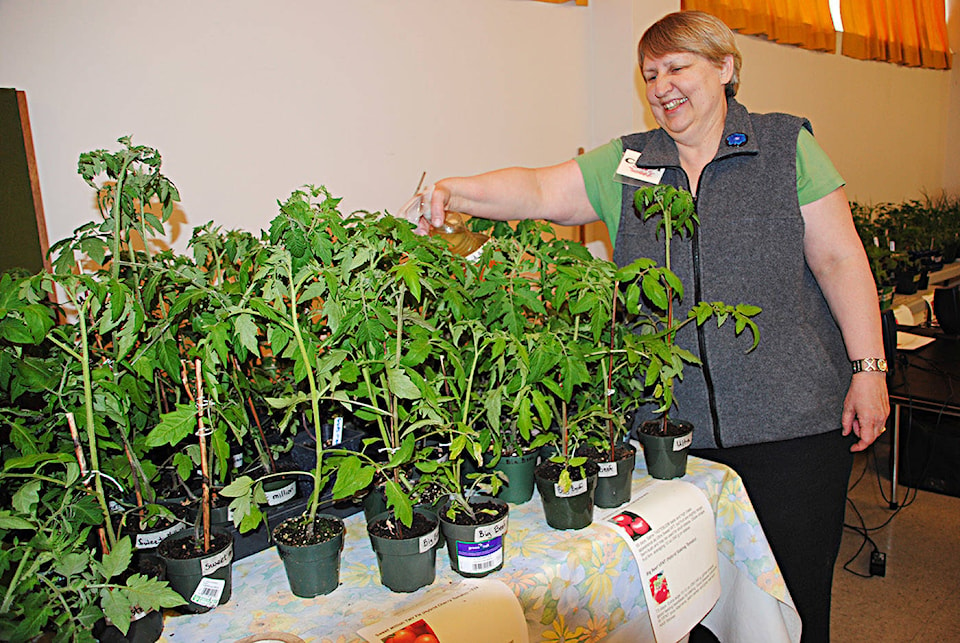When the growing season is short and the produce takes a long time to mature, pollinating flowers is necessary to increase yields.
If the flower is complete, has both pistil and stamen, pollinating can be as simple as gently shaking the plant. This mimics the wind’s motion which knocks the pollen onto the pistil. Research has found that shaking tomatoes between 10 a.m. and 2 p.m. substantially increases yields.
Squash, cucumbers and melons have incomplete flowers. Male flowers tend to be the first to appear with females following a short time later.
Male flowers are on longer stems, especially in squash plants. Female flowers have a miniature fruit directly behind the flower. When the flower is pollinated it drops off and fruit continues to grow. When the flower is not pollinated the flower dies then the fruit turns yellow and drops.
To pollinate incomplete flowers the pollen must be moved from the stamen in the male flower to the pistil on the female one. One method is to use a Q-tip and gather pollen then rub it on the pistil. Picking the male flower and rubbing it on the centre of the female flower also works.
The best time to pollinate is early in the morning when the flowers first open. On hot days, the flowers are spent by mid or late afternoon.
Cross pollination can occur between squash of the same species (summer squash, pumpkins, gourds, acorn squash, zucchini).
Crosses will not show up in this year’s crop but if the seed is saved and planted the differences might be noticeable in the next crop.
Most cucumber varieties can also be pollinated in this manner. The exception being what is often called Long English or Greenhouse cucumbers. These cucumbers were developed in Europe and are classified as parthenocarpic, they produce fruit without being pollinated. When these varieties are pollinated the fruit is crooked and has a different taste. If pollinated parthenocarpic cucumbers are left to mature, they become bitter.
Corn is a crop that does not rely on insects for pollination. It relies on the wind to move the pollen from one flower to the next. The instructions on a corn seed package will say to plant in blocks as opposed to one long row which allows the wind to carry pollen in all directions.
As the wind pollinates corn, two different varieties should not be placed in close proximity as there is a strong likelihood of the plants cross-pollinating. When this occurs one cob will have more than one type of kernel which in the case of sweet corn and ornamental corn, can render the cob inedible.
Breeders isolate the flowers of plants they wish to cross pollinate then transfer the pollen. The seeds are then collected in the fall and seedlings grown in the spring. Seedlings are rated and the best are kept.
In the case of Dahlias, the best of the best seedlings are planted in the Piper Creek Trial Gardens, on the outskirts of Red Deer. Those that are interested in growing, arranging or judging Dahlias should contact them about courses being held on August 1 and 2. Contact Debbie at 403 392 2159.
Linda Tomlinson has gardened in central Alberta for over 30 years. She can be reached at your_garden@hotmail.com.
